Our first goat babies have been born!
Despite being outside in our yard when the birth was happening, I managed to miss the entire thing since I was focused on listening to my teens share about the trip one of them organized for kids in the community that they had just returned from. One son ran downstairs to tell my that Mocha had her babies – he heard her and could see into the pen from where he was – and we all ran to see what was happening.
Last year Mocha had one large singleton, a male, and from the looks of her I thought she was having twins this time around. Last year I looked forward to triplets but then learned that triplets are much less common and when it happens usually one doesn’t survive. In the end, none of our goats had more than two. So this year I didn’t even consider any of them having more than twins.
Imagine my surprise to see three babies covered with birth fluids laying on the hay. One was still in the amniotic ac and wasn’t moving. Two of the boys immediately went in to the pen to massage it, but after they opened the sac and started it became clear it was stillborn and nothing could be done.
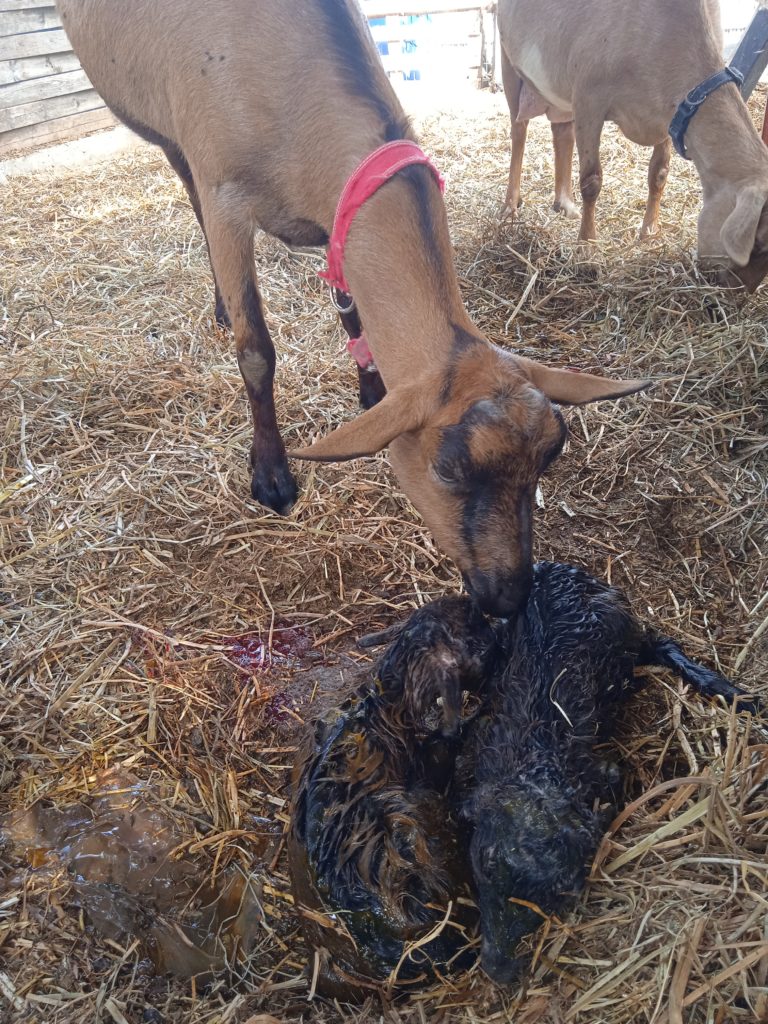
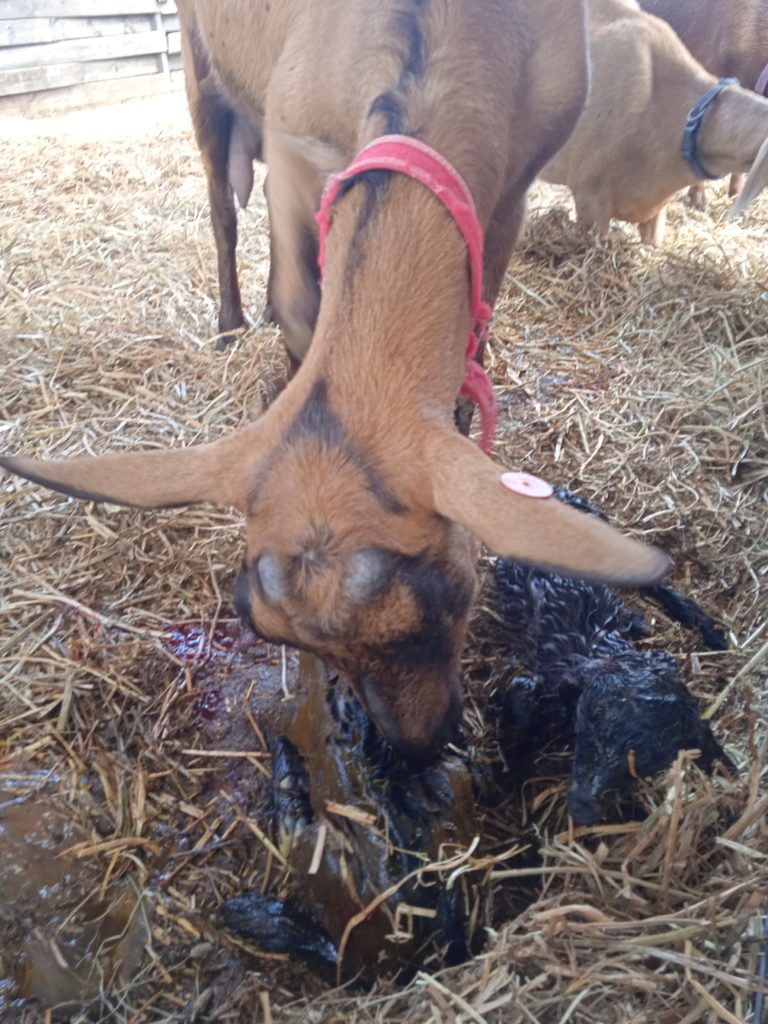
We were able to watch Mocha from the very first moments care for her kids. Last year I had learned about goat care during birth and as soon as our first goat was giving birth, went in to be next to her and towel off the babies immediately so they wouldn’t be chilled. I learned that I should have stayed more hands-off because my actions interfered with the bonding and subsequent nursing between that mother and her babies. That undoubtedly was a factor in the placenta being retained for many hours and we had to have someone come to help out with getting it out since it could lead to infection and death if it weren’t deal with
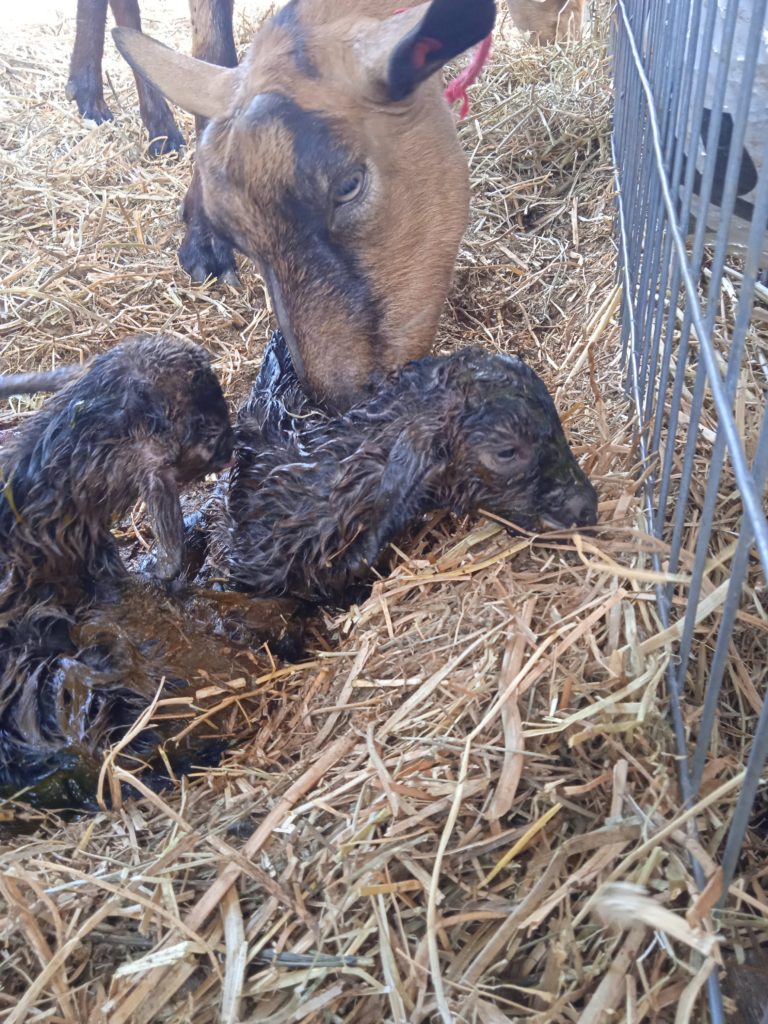
This time I just watched as she cleaned off one and then the other. We didn’t know if they were males or females for the first hour and a half, because we didn’t want to get close enough to look. I wanted her to have her privacy so we watched from outside the pen.
My fourteen year old did step in to help the one of the babies get latched on for nursing for the first time because it’s important they get colostrum as soon as possible. The other one wasn’t yet standing but this morning they were both standing and nursing, which is great. The placenta still hasn’t detached and I hope that as the babies nurse, it will stimulate the contractions to cause it to come out completely.
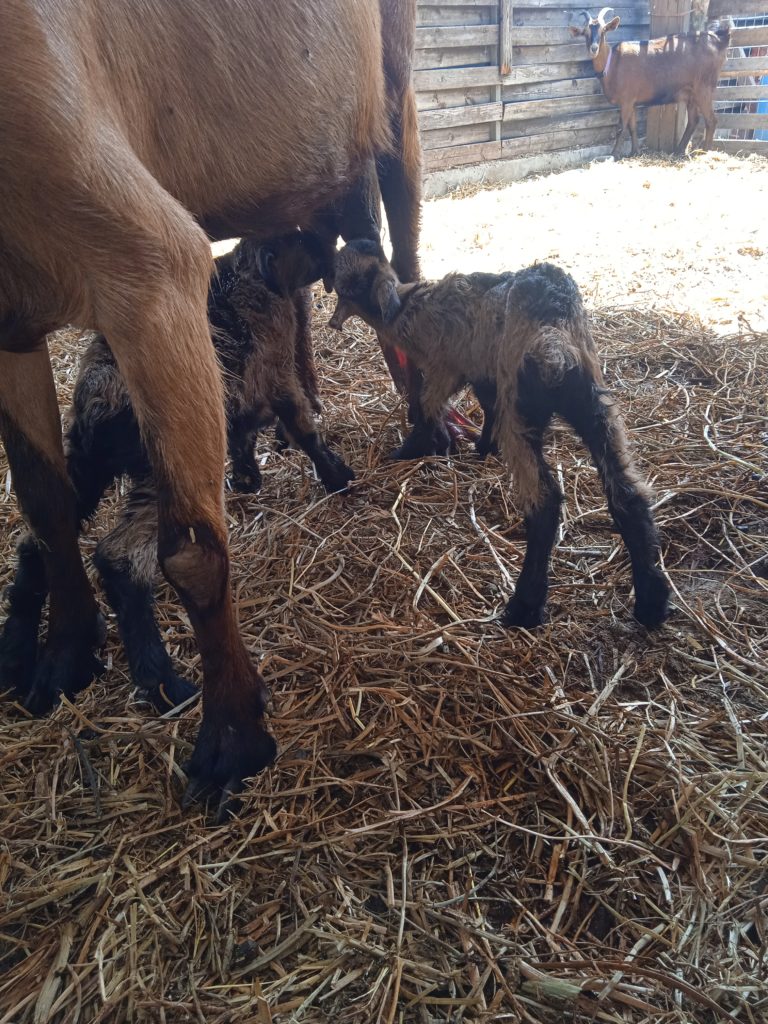
Ds6 was mesmerized and sat there for a long time just watching her clean her babies.
We watched as they began to make their first tentative movements to stand, falling over repeatedly. We had guests who arrived about an hour and a half after the kids were born, and commented that one of the kids didn’t look so strong because it was lying down. I explained that they were still newly born and it takes them time to learn to stand up. The one who was cleaned off first was the one to take the first steps and stand independently while the other was still laying down.

Last year our three goats gave birth to a total of five kids – we had four males and one androgynous, which I didn’t know was even possible. That led me to research goat genetics to figure out what had happened. I learned that the high male rate and the androgynous issue were a result of breeding a male with no horns to a female with no horns. Since I wanted baby goats without horns, that had seemed like a logical and good thing to do but I learned that males without horns shouldn’t be used for breeding because it negatively impacts the genetics.
Our new babies are……….two females! Yay! Mocha is a purebred Alpine so these babies are purebred Alpines as well. The other two goat mothers were bred with a purebred Alpine buck but aren’t purebred themselves, so their babies will be a mix as well. I’m hoping they won’t have horns but won’t know for a little bit until they start showing signs on their heads.
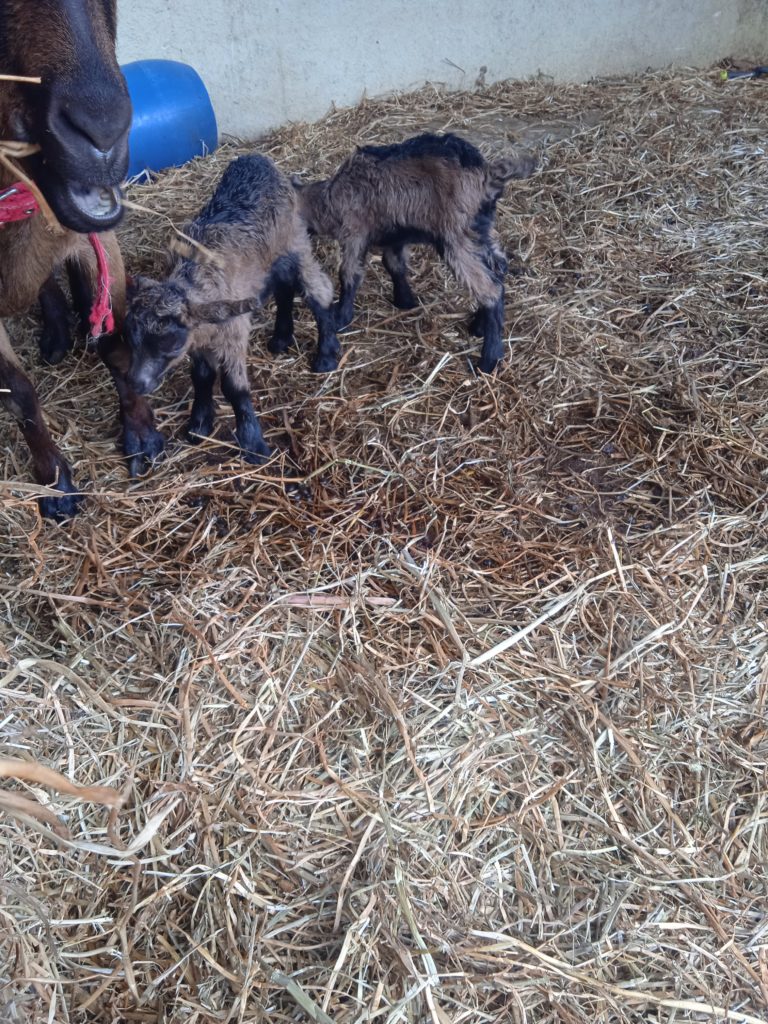
What will we do with these little babies in the long run? I don’t know. We sold all of the male babies last year when they were about ten weeks old, but we’ll have to see how many babies we end up with, how many are female, and how many have horns and all of that will factor into our decision.
The goats were all bred at the same time, so within the few days the next two goats should give birth. I’ll breathe a sigh of relief when it’s all over; hopefully everything will go smoothly without any need for intervention on our part. Last year we had to intervene with the placenta for one, and to pull out interlocked kids to help another give birth, and I very much hope we can be hands off this time around.
Avivah
Mazel Tov! Great news! I am sure its stressful before they give birth. also happy no need to intervene.
Thanks, Rachelli – it’s nice when it’s all over and all the mothers and babies are healthy! We’re still waiting on the final goat to give birth and working with the challenge presented by the second mother.
Mazel tov to you and Mama goat!
Thank you, Chavi!